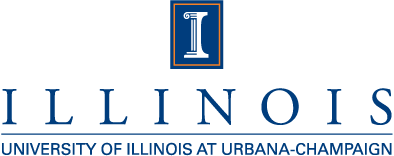Drainage is a critical component of agricultural production in the Midwest, and the need for drainage education is increasing. Expertise needed for effective drainage design is also increasing as precipitation becomes more variable and extreme, society expects cleaner water from drained agricultural areas, and new drainage practices are developed. This modular curriculum is designed to educate students or professionals to meet the growing need for next-generation drainage strategies.
The learning modules were developed by a team of drainage researchers and educators led by Dr. Jane Frankenberger and Dr. Laura Christianson. They will enable students at any university to benefit from leading-edge drainage knowledge sought by employers. They can also be used by drainage and conservation professionals, to gain a deeper understanding of drainage principles, to update their design methods, and to learn to plan the newer conservation drainage practices.

Using the Modules: The learning modules can be used in existing courses, or combined as an independent study course at institutions where drainage courses are not available. Solution files are available to course instructors; please see instructions below. The modules can also be used independently or as part of a structured education program for professionals working in drainage or conservation.
1.) Soil and Water Dynamics (optional)
This optional module introduces basic soil and water terms, concepts, and measurements that are used in drainage, providing a foundation for other modules.
Instructor: Dr. Amy Kaleita, Iowa State University
2.) Subsurface Drainage Overview
This module gives a basic introduction to the concept of subsurface drainage. It includes drainage history, understanding where drainage exists, types of drainage, drainage terms, and standards that are used in drainage design. Instructor: Dr. Laura Christianson, University of Minnesota
3.) Subsurface Drainage Design Basics
This module provides an overview of subsurface drainage design elements including layouts, depth and spacing, and pipe diameters, and demonstrates how to calculate these variables for an example field.
Instructor: Dr. Amy Kaleita, Iowa State University
4.) Subsurface Drainage Design - Advanced
This module discusses quantitative aspects of subsurface drainage design, including drain spacing and depth, developing a layout, determining grades and depth, and pipe sizing. It also introduces the Illini Drainage Tools for facilitating the layout of a drainage system.
Instructor: Dr. Richard Cooke, University of Illinois
5.) Drainage and Water Quality
This module combines background information about water quality with concepts of subsurface drainage and nutrient loss. It includes water quality terminology and concepts, an overview of how and why nutrient pollutants end up in drainage water, and interpretation and calculation of concentrations and loads.
Instructor: Dr. Laura Christianson, University of Minnesota
6.) Conservation Drainage Overview
This module introduces the conservation drainage concept and practices, and is intended for students, conservation professionals, landowners, and agency officials. It introduces controlled drainage, drainage water recycling, and denitrifying bioreactors, described fully in their own stand-alone modules 8, 9, 10 and 11.
Instructor: Dr. Laura Christianson, University of Minnesota
7.) In-Field Practices
This module discusses the performance of various practices that are implemented in the field to reduce nitrogen loss. These practices include no-till, N management (rate and timing), and cover crops.
Instructor: Dr. Matt Helmers, Iowa State University
8.) Controlled Drainage
This module introduces the practice of controlled drainage, which adds the ability to raise and lower the drainage outlet to control the timing and amount of water released from the system. Controlled drainage reduced nitrate loss from the drainage system, and can provide modest yield benefits by conserving water during the growing season. Instructor: Dr. Christopher Hay, Iowa Soybean Association
9.) Drainage water recycling
Drainage water recycling is the practice of capturing excess water drained from fields, storing the drained water in a pond or reservoir, and using the stored water to irrigate crops when there is a water deficit. This module provides an overview of its benefits, examples of how it has been implemented, and an online tool for sizing a reservoir. Instructor: Dr. Jane Frankenberger, Purdue University
10.) Denitrifying Bioreactors Basics
This module gives a basic introduction to denitrifying “woodchip” bioreactors which remove nitrate from subsurface drainage.
Instructor: Dr. Laura Christianson, University of Minnesota
11.) Denitrifying Bioreactors - Advanced
This advanced module builds on the previous “Bioreactor Basics” module to detail denitrifying bioreactor design and factors that impact performance. The factors that impact bioreactor function and how those factors could be used in bioreactor design are explained.
Instructor: Dr. Laura Christianson, University of Minnesota
12.) Practice selection and costs
This module compares conservation drainage practices based on cost and also additional metrics including water quality improvement, stackability, barriers, and additional benefits. This is intended for students (especially the discounting content) but also conservation professionals.
Instructor: Dr. Laura Christianson, University of Minnesota
13.) Drainage Water Quality Monitoring Overview
This module gives a basic introduction to edge of field monitoring for subsurface drainage water quality.
Instructor: Dr. Laura Christianson, University of Minnesota
14.) Drainage water quality monitoring: Let's do it!
This module provides detail for those who are planning, implementing, and analyzing data from subsurface drainage edge-of-field monitoring systems.
Instructor: Dr. Laura Christianson, University of Minnesota
For solutions for the Quizzes or Homeworks, email Dr. Jane Frankenberger at Purdue University, frankenb@purdue.edu with information about the course in which you plan to use a module.


This material is based upon work that is supported by the National Institute of Food and Agriculture, U.S. Department of Agriculture (award number 2018-70003-27661). Any opinions, findings, conclusions, or recommendations expressed in this publication are those of the author(s) and do not necessarily reflect the view of the U.S. Department of Agriculture.



















